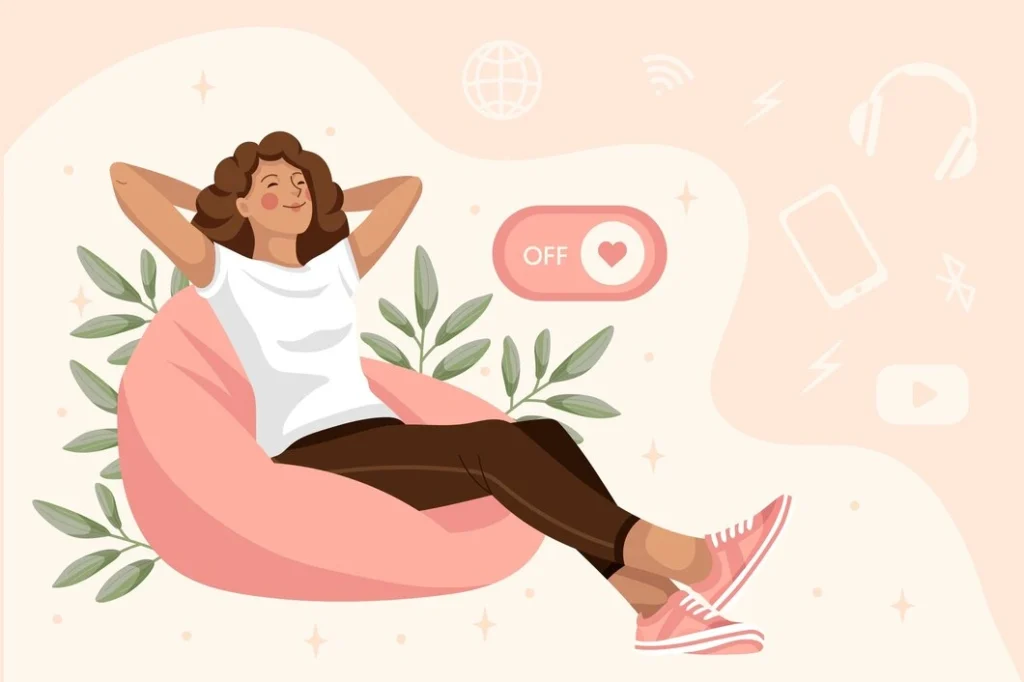In a world that constantly pushes us to be faster, more efficient, and always on the go, a new trend is emerging that encourages us to slow down and savor the moment—the “Dilly-Dally” trend. Far from being just an excuse for procrastination, this movement is about embracing a more mindful, unhurried approach to life. Whether it’s lingering over your morning coffee, taking the scenic route, or simply allowing yourself to enjoy moments of idleness, the art of dilly-dallying is proving to be a refreshing antidote to the hustle culture. In this article, we’ll explore why this trend is gaining popularity and how incorporating a little more leisure into your daily routine can bring unexpected benefits.

What is the ‘Dilly-Dally’ Trend?
The ‘Dilly-Dally’ trend is a lifestyle movement that encourages people to embrace slower, more intentional moments in their everyday lives. In stark contrast to the hustle culture that glorifies productivity, speed, and constant motion, the ‘Dilly-Dally’ trend asks individuals to pause, wander, and indulge in activities that might seem trivial or non-urgent but are, in fact, crucial for mental well-being and happiness.
The name itself—‘Dilly-Dally’—evokes images of leisurely, sometimes aimless, activities that don’t have a specific goal or outcome in mind. It’s about taking time to do things simply for the joy of doing them. Whether it’s lingering over a cup of coffee, going for a walk without a clear destination, or even spending hours doing something creative without concern for the final product, the essence of the trend lies in the joy of being present and appreciating small, unhurried moments.
The rise of this trend can be traced to growing concerns about burnout and mental health, especially in a world that constantly pushes for productivity. With work-related stress, long hours, and the pressure to “do more,” many individuals are finding solace in slowing down. As the digital age has brought us closer to an always-on culture, people are now realizing that disconnecting from the constant rush and focusing on mindfulness can significantly improve their overall quality of life.
The Dilly-Dally trend isn’t about doing nothing—it’s about intentional idleness. It encourages people to step off the fast-paced treadmill and find satisfaction in those precious moments of quiet, creativity, and spontaneity. The movement is not just about taking breaks but about actively choosing to step into a slower, more contemplative pace of life. For example, skipping the gym to take a long walk through the park, or instead of cramming tasks into every free moment, letting yourself get lost in a book for a few hours, are both acts of embracing the trend.
In a broader cultural sense, the ‘Dilly-Dally’ trend reflects a shift in values—one that prioritizes self-care, well-being, and balance over relentless productivity. As more people adopt this mindset, it’s reshaping how we define success and how we measure a fulfilling life. The idea is simple: life doesn’t have to be a race, and the moments that matter are often the ones we aren’t rushing to finish.

Why Slowing Down Matters in Today’s World
In today’s fast-paced, always-connected world, slowing down has become a radical, yet increasingly essential, act. With the rise of constant digital notifications, the pressure to stay productive, and societal expectations of “doing more,” many people find themselves overwhelmed, stressed, and burnt out. In such an environment, the simple act of slowing down is a powerful tool for mental, physical, and emotional well-being.
1. Combatting Burnout and Mental Exhaustion
One of the most significant reasons to embrace slowing down is to combat burnout. With more people working longer hours, often balancing multiple responsibilities and roles, the constant demand for productivity can take a toll on our mental health. Studies have shown that prolonged periods of high stress and a lack of rest can lead to burnout, depression, and anxiety. Slowing down allows our minds and bodies to recharge, reducing the mental exhaustion that can result from a constant state of go-go-go.
When we allow ourselves the time to rest, engage in leisurely activities, and disconnect from the pressures of our daily routines, we can avoid the negative effects of stress and improve our capacity for focus, creativity, and overall happiness.
2. Enhancing Mindfulness and Presence
In a world filled with distractions, it’s easy to feel disconnected from the present moment. Slowing down gives us the opportunity to be more mindful and present in our daily lives. By taking the time to savor experiences—whether it’s enjoying a meal, spending time with loved ones, or simply taking a walk in nature—we can experience life more fully. Mindfulness, the practice of paying attention to the present moment without judgment, has been shown to improve mental clarity, reduce stress, and increase emotional resilience.
In our fast-moving society, many people are rushing through their days, checking off tasks on a never-ending to-do list, and missing out on the simple pleasures of life. Slowing down allows us to embrace the present and find meaning in everyday moments.
3. Improving Creativity and Problem-Solving
Another surprising benefit of slowing down is its positive impact on creativity and problem-solving skills. When we constantly rush through tasks and don’t take time to pause, we can miss out on valuable insights and ideas. On the other hand, slowing down provides the mental space to let ideas percolate, reflect on challenges, and approach problems with fresh perspectives.
Many of the world’s greatest thinkers and creators have emphasized the importance of downtime and reflection in their creative processes. Albert Einstein famously said, “Creativity is the residue of time wasted.” By stepping away from the grind and giving our minds time to rest, we make room for innovation, new ideas, and solutions.
4. Rebuilding Human Connection
In our hyper-connected digital world, we often feel like we’re constantly communicating, yet sometimes, we’re not truly connecting. Fast-paced lifestyles can lead to shallow interactions, where quality time with family, friends, and colleagues is sacrificed for convenience and speed. Slowing down allows us to rebuild those meaningful connections, whether it’s by having deep conversations with loved ones or giving ourselves the time to listen and engage with those around us.
Spending less time on devices and more time in face-to-face interactions creates stronger, more fulfilling relationships. It also fosters empathy and understanding, which is critical for emotional health and a sense of belonging.
5. Encouraging a Healthier Lifestyle
Slowing down also plays a crucial role in fostering a healthier lifestyle. We often rush through meals, exercise routines, and even sleep, prioritizing efficiency over quality. Slowing down in these areas can lead to better digestion, improved physical health, and more restorative rest. For example, instead of scarfing down a meal in front of a screen, taking the time to enjoy and savor food promotes mindful eating and better digestion.
Additionally, slowing down in terms of physical activity—whether it’s through yoga, walking, or other low-impact exercises—can help reduce stress levels, improve circulation, and enhance overall physical health. When we stop trying to rush through workouts or chores, we give our bodies the attention they need to thrive.
In today’s world, where speed and efficiency are often the measuring sticks for success, slowing down may seem counterintuitive. However, taking the time to pause, reflect, and appreciate the present can significantly improve the quality of our lives, both mentally and physically. Slowing down isn’t about abandoning productivity; it’s about finding balance and creating space for the things that matter most—our health, relationships, and happiness.

Simple Ways to Integrate ‘Dilly-Dallying’ into Your Routine
Integrating the art of dilly-dallying into your daily life doesn’t require a major lifestyle overhaul. It’s about making small, intentional changes that encourage you to slow down and savor the present moment. Here are some simple ways to weave the essence of ‘dilly-dallying’ into your everyday routine:
1. Start Your Day Slowly
Instead of jumping out of bed and immediately diving into work or responsibilities, give yourself permission to start the day at a more leisurely pace.
- Mindful Mornings: Set aside 10-15 minutes in the morning to enjoy a quiet moment. Whether it’s sipping coffee, journaling, stretching, or simply sitting in silence, use this time to center yourself before the busyness of the day begins.
- Slow Breakfast: Instead of rushing through breakfast while answering emails or scrolling through your phone, take the time to enjoy your meal. Engage all your senses—appreciate the smell, texture, and taste of your food.
2. Take Intentional Breaks
Throughout the day, schedule breaks where you don’t feel the need to be productive.
- Go for a Walk: Instead of taking a break to check social media, step outside for a walk around the block. Allow your mind to wander without any agenda—just enjoy the sights and sounds around you.
- Breathe and Reset: If you’re feeling overwhelmed, take a moment to step away from work or tasks. Practice deep breathing or stretch to reset your mind and body.
3. Indulge in a Hobby Without Expectations
One of the core aspects of dilly-dallying is engaging in activities for the sheer enjoyment of them, without the pressure to be productive.
- Creative Pursuits: Whether it’s painting, knitting, or playing an instrument, make time for creative hobbies that don’t have a “purpose” other than your enjoyment. Let go of the idea that your hobby must lead to something tangible like a completed project or a perfect outcome.
- Unhurried Reading: Pick up a book that interests you, and let yourself get lost in it without worrying about how long it takes to finish. The joy is in the reading, not the end goal.
4. Take Technology Breaks
Constant connection to technology can prevent us from truly enjoying the moment.
- Phone-Free Time: Designate specific moments in the day, like during meals or before bed, where you intentionally disconnect from screens. This gives you the chance to truly be present, whether with yourself or with others.
- Social Media Detox: If you find yourself scrolling endlessly, take a break from social media to focus on more meaningful activities that allow you to dilly-dally without distraction.
5. Embrace the Slow Moments
Sometimes, we’re so focused on accomplishing tasks that we forget to simply be in the moment.
- Let Yourself Wander: When you’re going somewhere, take a detour or a longer route without rushing to your destination. Enjoy the extra time to observe your surroundings or think freely without a particular agenda.
- Stop and Smell the Roses: Literally. Whether you’re walking through a park or in your garden, take time to pause and appreciate the beauty of nature around you. You’d be amazed at how rejuvenating these small acts of mindfulness can be.
6. Practice the Art of Doing Nothing
It might sound counterproductive, but intentionally doing nothing is an important aspect of dilly-dallying.
- Nap or Rest: Allow yourself time to rest without guilt. A short nap or just lying down and doing nothing can refresh your mind and body, making you more energized for the rest of your day.
- Daydreaming: Let your mind wander without purpose. It’s an opportunity for creativity, relaxation, and mental escape, and it can be just as productive as focusing on a task.
Incorporating ‘dilly-dallying’ into your routine is about making time for the things that rejuvenate you and bring joy, without rushing or over-scheduling. By practicing these simple steps, you can create a more balanced, intentional, and enjoyable daily life, where the focus is on being present rather than constantly chasing productivity.

Balancing Relaxation with Productivity
In today’s fast-paced world, finding a healthy balance between relaxation and productivity can often feel like a daunting task. On one hand, there’s a constant push to be productive, get things done, and achieve goals. On the other, there’s the undeniable need to rest, recharge, and take care of our mental and physical well-being. Striking the right balance between the two is essential for maintaining long-term happiness, health, and effectiveness in both work and life.
Here’s how you can find that sweet spot between relaxation and productivity:
1. Embrace Structured Flexibility
One of the best ways to balance productivity with relaxation is by creating a flexible schedule that allows you to accomplish your goals without burning out.
- Time Blocking: Set specific blocks of time for work, relaxation, and self-care. For example, schedule your most productive tasks when your energy levels are highest, and plan for moments of relaxation (like a walk or short break) throughout the day to help you recharge.
- Task Flexibility: Within these blocks, allow yourself the freedom to shift things around if you’re feeling too tired or inspired to focus. Flexibility within structure can help reduce stress while ensuring you stay on track.
2. Prioritize Rest to Boost Productivity
It might sound counterintuitive, but taking regular breaks can actually make you more productive in the long run.
- The Power of Short Breaks: Research shows that taking short breaks throughout the day helps improve focus and cognitive function. Rather than powering through long hours without rest, taking a five- to ten-minute break every hour can refresh your mind and prevent mental fatigue.
- Quality Sleep: Sleep is essential for productivity. When you rest well, your mind is clearer, and your energy levels are higher, making you more effective when you do work. Prioritize good sleep hygiene to ensure you wake up feeling refreshed and ready to take on the day.
3. Practice Mindfulness and Single-Tasking
In a world of multitasking, the simple act of focusing on one thing at a time can be incredibly effective for both relaxation and productivity.
- Mindful Work: When working, try focusing on one task at a time instead of juggling multiple projects. This helps you complete each task more efficiently, reducing stress and increasing satisfaction in the work you do.
- Mindful Relaxation: Similarly, when you relax, practice mindfulness by fully immersing yourself in the experience—whether you’re taking a walk, reading, or enjoying a cup of tea. This level of presence can help you feel more rejuvenated and grounded, making it easier to focus when you return to your tasks.
4. Know When to Step Away from Work
Sometimes, the key to balancing relaxation and productivity is knowing when it’s time to walk away from work and recharge completely.
- Set Boundaries: Establish clear boundaries between work time and relaxation time. When your workday is over, shut off your computer, put away your phone, and give yourself permission to rest. This helps you mentally disconnect from work, allowing you to truly enjoy your downtime.
- Engage in Restorative Activities: Whether it’s a hobby, exercise, or spending time with loved ones, engage in activities that restore your energy and focus. These moments of relaxation serve as a reset button, enabling you to come back to work feeling refreshed and ready to tackle new challenges.
5. Incorporate Leisure into Your Productive Time
You can even blend relaxation into your productive activities, making the two coexist in a harmonious way.
- Work with Pleasure: Find ways to incorporate small pleasures into your workday. For instance, listen to relaxing music or an inspiring podcast while you work, or take a stretch break when transitioning between tasks. These small acts of self-care can keep your spirits high while maintaining productivity.
- Leisure in Between: Use your breaks wisely by engaging in relaxing activities that don’t require much effort but still offer joy, like reading a chapter from a book, meditating for five minutes, or simply watching a short video that makes you laugh. These micro moments of leisure help you stay energized while still getting things done.
6. Understand the Importance of Saying No
A huge part of balancing relaxation and productivity is learning to say no to things that overextend you.
- Avoid Over-Scheduling: It’s easy to fill up your calendar with tasks and social commitments, but doing so can leave little time for relaxation. Be mindful of your limits and give yourself permission to say no when you need to prioritize self-care or downtime.
- Delegate Tasks: If possible, delegate tasks that others can handle, giving you more space to focus on your most important projects and personal well-being.
Balancing relaxation with productivity doesn’t mean that you have to sacrifice one for the other. In fact, when you give yourself the time and space to relax, you’re more likely to perform better, feel more energized, and experience greater satisfaction in all areas of life. By incorporating these simple strategies into your routine, you can create a lifestyle that values both hard work and meaningful rest.
The Future of the ‘Dilly-Dally’ Lifestyle
As the world continues to move at an ever-increasing pace, it’s becoming clear that many people are craving a return to a slower, more intentional way of life. The ‘Dilly-Dally’ lifestyle, rooted in mindfulness, relaxation, and embracing the unhurried moments, is not just a passing trend—it’s a shift in how we approach both our personal and professional lives. In this section, we’ll explore the potential future of this lifestyle and how it might shape our lives moving forward.
1. A Shift Towards Purposeful Living
In the future, it’s likely that more people will place greater value on purposeful living, which emphasizes the quality of experiences over the quantity of tasks completed.
- Intentionality in Daily Choices: As people become more aware of the negative impacts of stress and burnout, the ‘Dilly-Dally’ lifestyle could become an integral part of the way we live. It might encourage more individuals to intentionally choose less-busy, more fulfilling paths in their careers, relationships, and daily routines.
- Redefining Success: The success narrative could evolve, shifting away from productivity-based metrics to one focused on happiness, well-being, and personal fulfillment. In this world, taking time to “dilly-dally” could be seen as an essential part of being successful in the long term—rather than a waste of time.
2. Increased Focus on Mental Health and Well-being
The future of the ‘Dilly-Dally’ lifestyle is intrinsically linked to the growing emphasis on mental health. As society continues to recognize the importance of self-care, slowing down, and recharging, we may see an even greater push for activities that promote mental well-being.
- Mindfulness Integration: Meditation, yoga, and other mindfulness practices that promote slowing down will likely become more mainstream and integrated into daily routines—whether at work, during travel, or at home. Organizations and communities may incorporate these practices into their cultures, encouraging people to take breaks and embrace unstructured, relaxing moments.
- Supportive Communities: There may also be a rise in communities and social movements dedicated to embracing slower lifestyles. Online platforms could focus on sharing tips for practicing the ‘Dilly-Dally’ lifestyle, offering guidance on incorporating slowness into everyday life, and providing virtual support for those looking to find balance.
3. Technology’s Role in Enabling ‘Dilly-Dallying’
In an increasingly connected world, it may seem like technology is at odds with the notion of slowing down. However, the future of the ‘Dilly-Dally’ lifestyle may involve using technology to help us slow down, rather than speeding up.
- Technology for Mindfulness: We could see more apps and tools designed specifically to encourage mindful breaks, relaxation, and meditation. For example, “digital detox” apps that remind users to disconnect for a while or relaxation platforms offering guided pauses throughout the day could become an integral part of our routines.
- Work-Life Integration: With the growing shift toward remote work and flexible hours, technology may allow for more balance between work and rest. This could give people the freedom to adopt ‘Dilly-Dally’ practices by allowing them to take breaks or switch gears without feeling guilty or distracted by the office environment.
4. The Rise of Slow Travel and Leisure
As people increasingly seek more meaningful, enriching experiences, we may see a significant rise in slow travel and leisure activities, as part of the ‘Dilly-Dally’ trend.
- Exploring at a Slower Pace: Instead of the traditional fast-paced vacations with packed itineraries, slow travel encourages taking the time to immerse oneself fully in a destination—whether it’s a weekend retreat, an extended vacation, or a staycation. The future could bring a resurgence of leisure tourism, where the focus is on local culture, quiet exploration, and taking time to enjoy the journey.
- Experiential Leisure: Leisure activities in the future might become less about ticking off lists of things to do and more about experiencing life deeply. Instead of rushing to see all the sights, people may prefer spending quality time in nature, engaging in meaningful conversations, or just resting in the moment.
5. Workplace Transformation and Productivity Reimagined
The ‘Dilly-Dally’ lifestyle might also influence the future of the workplace. As companies focus more on employee well-being, there may be a shift toward fostering environments that value balance over continuous output.
- Flexible Work Hours: Flexible hours and hybrid work models are likely to grow in popularity, as more employers recognize that employees need space for relaxation to maintain long-term productivity. This flexibility would allow individuals to dilly-dally when necessary without the pressure of rigid schedules.
- Redefining Productivity: Traditional definitions of productivity might be replaced with a more nuanced view that values creativity, focus, and work-life balance. Instead of measuring success by hours spent at the desk, workplaces may start to prioritize mental clarity, problem-solving, and well-being as markers of success.
6. Sustainability and Slow Living
As awareness of environmental issues grows, there may be a shift toward more sustainable, slow living practices that align with the ‘Dilly-Dally’ mindset.
- Slow Fashion and Consumption: The future could see a rise in conscious consumerism, where individuals choose quality over quantity, and focus on long-lasting, sustainable products. Slow fashion, zero-waste lifestyles, and ethical consumption could complement the philosophy of slowing down and appreciating what we already have.
- Sustainable Communities: Communities may begin to adopt more localized, self-sustaining practices that encourage a slower, more deliberate pace of life. Urban areas might embrace green spaces, communal gardens, and walkable environments that make it easier to dilly-dally without the constant pressure of urban hustle.
The future of the ‘Dilly-Dally’ lifestyle is promising, with increasing awareness of its potential benefits for mental health, work-life balance, and sustainability. As more people seek fulfillment in a world that often moves too fast, the movement toward a slower, more intentional way of living is likely to grow. Whether through the integration of mindfulness, redefined work norms, or a focus on sustainable living, slowing down might just be the key to creating a more fulfilling, balanced future for everyone.
Conclusion
In a world that constantly pushes us to do more, achieve more, and move faster, embracing the ‘Dilly-Dally’ lifestyle offers a refreshing alternative. By slowing down and allowing ourselves the space to simply be—whether through mindful relaxation, indulging in hobbies, or taking time to enjoy the little things—we can rediscover the joy of living in the present moment.
As we look to the future, the principles of this lifestyle are poised to gain even more significance. From fostering healthier work-life balances to embracing mindfulness and sustainability, dilly-dallying isn’t about avoiding responsibilities or becoming complacent; it’s about intentionally creating moments of stillness that enhance both our productivity and our well-being.
Incorporating elements of this slow, intentional living into our daily routines can help us reclaim our time, our mental clarity, and our connection to the world around us. The future of the ‘Dilly-Dally’ lifestyle holds the potential to not only make our lives richer and more fulfilling but also to create a society where quality over quantity, relaxation over stress, and presence over hurry become the new norms.
So, take a step back, embrace the art of slowing down, and allow yourself the time to truly enjoy life—not just race through it. The world can wait.
Table of Contents
Val Kilmer’s Legacy: A BIG Hollywood Icon Remembered – trendsfocus
TikTok has declared ‘dilly-dallying’ spring is the 2025 vibe (dailydot.com)